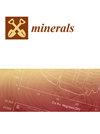墨西哥湾次表层新生代砂岩的重矿物和锆石年龄制约因素
IF 2.2
4区 地球科学
Q2 GEOCHEMISTRY & GEOPHYSICS
引用次数: 0
摘要
结合重矿物分析和锆英石地质年代学,我们能够追踪到北美大陆的祖先河流系统向墨西哥湾深层地下(沿海平原和近海深水区)提供的碎屑。在古新世-始新世威尔科克斯组的沉积过程中,该地区西部的砂岩被解释为通过古格兰德河物质衍生的罗西塔水系的产物,其中大部分沉积物来自西科迪勒拉山系。与此相反,从更东面的水井中提取的样本中,来自亚瓦派-马扎扎尔省的锆石比例很高,被认为是洛克代尔(Rockdale)水系的产物,沉积物主要来自古科罗拉多(Colorado)或古科罗拉多-布拉索斯(Colorado-Brazos)水系。有证据表明,罗西塔水系的沉积物偶尔会延伸到墨西哥湾中部,同样,有数据表明,洛克代尔水系也偶尔向盆地西部提供沉积物。在墨西哥湾中部的晚始新世(耶瓜地层)期间,产地发生了明显的变化。早期的耶瓜砂岩含有大量格伦维尔锆石成分,很有可能源自古密西西比河,而晚期的耶瓜砂岩则以源自西科迪勒拉山脉的锆石为主,类似于由罗西塔水系通过古格兰德河注入的威尔科克斯砂岩。从古密西西比河到古格兰德河的转换意味着在晚始新世期间,排水模式发生了重大重组。墨西哥湾深水区的中新世砂岩主要来源于古密西西比河,但据推断,古红河也为位于西部的水井提供了水源。本文章由计算机程序翻译,如有差异,请以英文原文为准。
Heavy Mineral and Zircon Age Constraints on Provenance of Cenozoic Sandstones in the Gulf of Mexico Subsurface
Combined heavy mineral analysis and detrital zircon geochronology have enabled us to track detritus supplied by the ancestral river systems draining the North American continent into the deep subsurface of the Gulf of Mexico, in both the coastal plain and the offshore deep water areas. During deposition of the Paleocene–Eocene Wilcox Group, sandstones in the western part of the area are interpreted as the products of the Rosita system derived via paleo-Rio Grande material, with a large component of sediment shed from the Western Cordillera. By contrast, samples from wells further east have high proportions of zircons derived from the Yavapai-Mazatzal Province and are attributed to the Rockdale system with sediment fed predominantly by the paleo-Colorado or paleo-Colorado-Brazos. There is evidence that sediment from the Rosita system occasionally extended into the central Gulf of Mexico, and, likewise, data indicate that the Rockdale system sporadically supplied sediment to the western part of the basin. During the Late Eocene of the central Gulf of Mexico (Yegua Formation) there was a distinct shift in provenance. The earlier Yegua sandstones have a large Grenville zircon component and are most likely to have had a paleo-Mississippi origin, whereas the later Yegua sandstones are dominated by zircons of Western Cordilleran origin, similar to Wilcox sandstones fed by the Rosita system via the paleo-Rio Grande. The switch from paleo-Mississippi to paleo-Rio Grande sourcing implies there was a major reorganisation of drainage patterns during the Late Eocene. Miocene sandstones in the deepwater Gulf of Mexico were principally sourced from the paleo-Mississippi, although the paleo-Red River is inferred to have contributed to the more westerly-located wells.
求助全文
通过发布文献求助,成功后即可免费获取论文全文。
去求助
来源期刊

Minerals
MINERALOGY-MINING & MINERAL PROCESSING
CiteScore
4.10
自引率
20.00%
发文量
1351
审稿时长
19.04 days
期刊介绍:
Minerals (ISSN 2075-163X) is an international open access journal that covers the broad field of mineralogy, economic mineral resources, mineral exploration, innovative mining techniques and advances in mineral processing. It publishes reviews, regular research papers and short notes. Our aim is to encourage scientists to publish their experimental and theoretical results in as much detail as possible. There is no restriction on the length of the papers. The full experimental details must be provided so that the results can be reproduced.
 求助内容:
求助内容: 应助结果提醒方式:
应助结果提醒方式:


